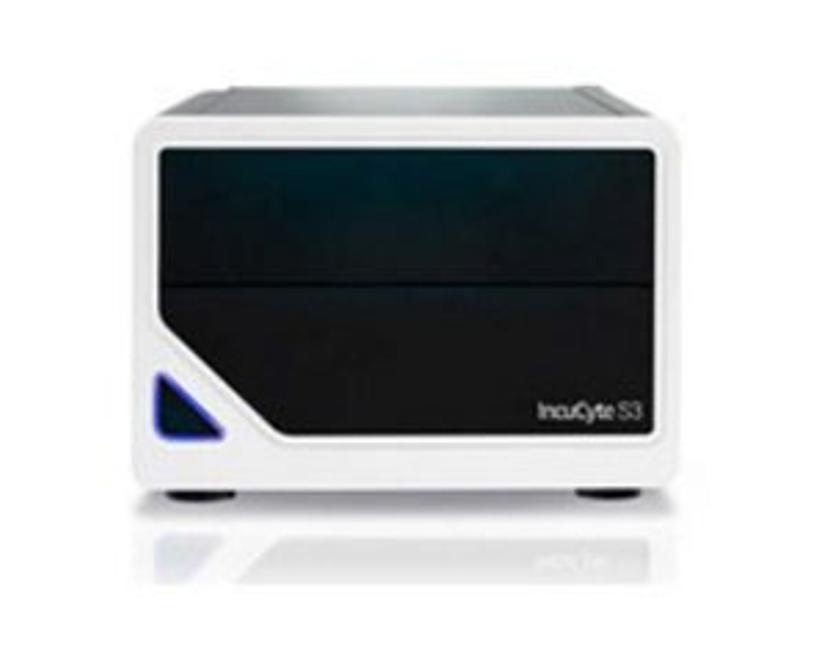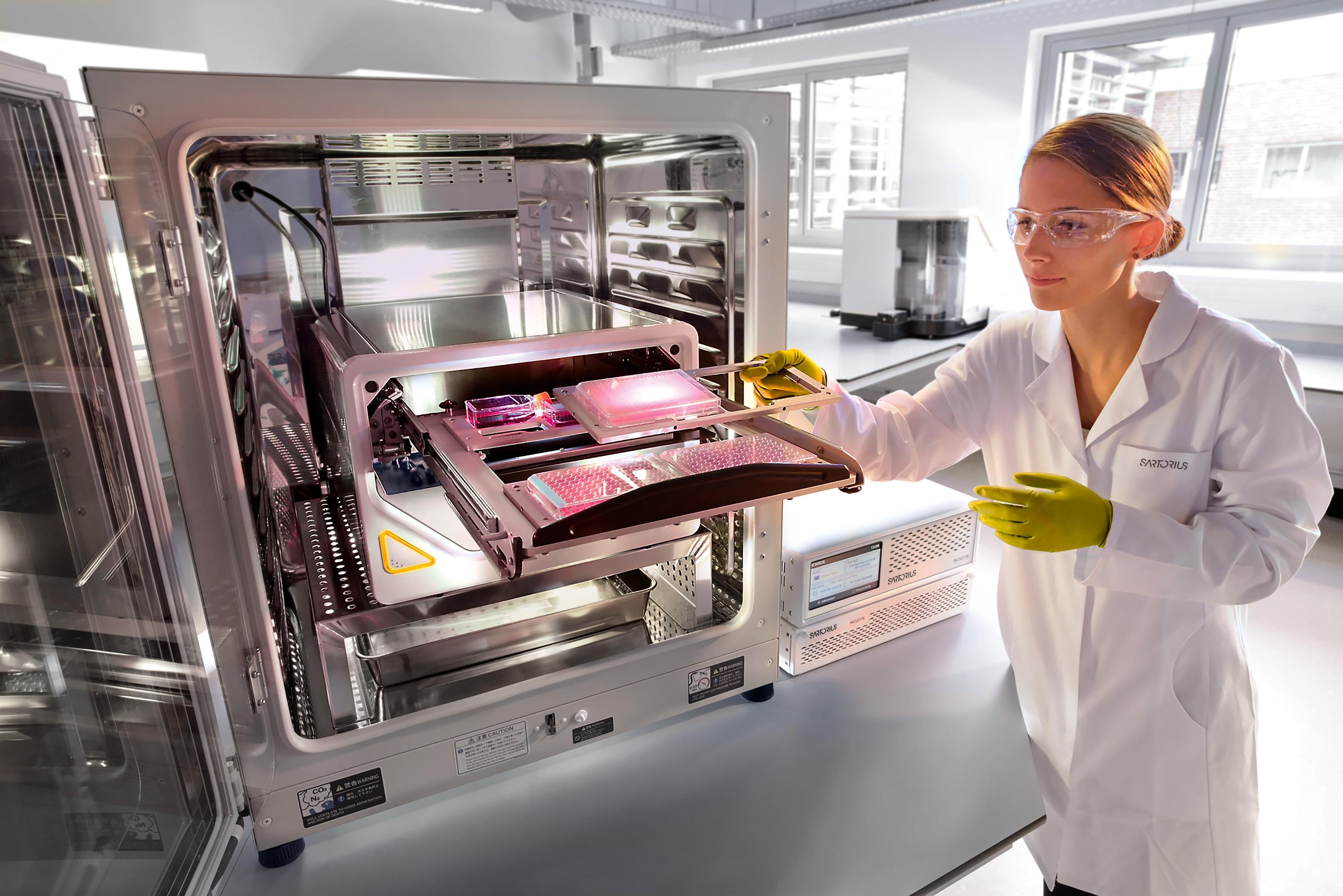Ask New Research Questions with the Latest Live Cell Imaging Technology
Learn how scientists around the world are using IncuCyte technology to investigate dynamic biological processes in real time
19 Jun 2017

The next-generation IncuCyte® S3 Live-Cell Analysis System, from Essen BioScience, is designed to provide information-rich analysis of biological processes. The imaging system is contained within an incubator, enabling undisturbed qualitative and quantitative measurement of cells over time in a physiologically relevant environment. Round-the-clock image acquisition and analysis records kinetic and spatial information, meaning you won’t miss a thing, and enables you to perform experiments that were not previously possible.
The flexible assay platform can support a whole research team by enabling multiple cell-based applications and up to six microplate experiments from different users to be run in parallel, making the IncuCyte S3 a highly productive instrument for your laboratory. IncuCyte technology is suitable for the study of cell health, cell movement and cell function across a range of research areas, and has already been cited in over 1,000 journal publications. Read on for some of the latest research highlights of the IncuCyte technology in oncology, immunology and neuroscience.
Enabling advanced oncology research
Dr. Kim Wicklund, Director of Product Management, Essen BioScience, explains how the IncuCyte S3 Live-Cell Analysis System is suited for many in vitro applications in cancer research, including assays for cell proliferation, cell health and immune cell killing. Plus, hear how the intuitive software enables even first-time users to begin collecting images and capturing data in just a few clicks.

Learn more about how the IncuCyte S3 can be used to perform live-cell tumor spheroid assays for automated measurement of tumor size in real time in this free download.
Recently published research has also demonstrated the use of IncuCyte technology in helping to elucidate cell signaling pathways in prostate cancer, investigate angiogenesis in colon cancer and explore the role the tumor microenvironment may play in breast cancer treatment. The system has also been used in the analysis of drug interactions for treatment of brain tumors. In the search for an effective treatment for the malignant adult brain tumor, glioblastoma multiforme, Linnéa Schmidt et al., Oncotarget, 2016, measured cell density in real time to analyze the effect of combinations of drug interactions on glioblastoma cells from patient samples. The study identifies a potential modulator of anticancer drug response.
How neuroscientists are using IncuCyte technology
Some of the more recently published studies in neuroscience have used the IncuCyte for research into Alzheimer's disease, Parkinson's disease, peripheral nerve injury and regeneration, as well as neuroblastoma and glioblastoma research. Research by Hideki Yagi et al., PLoS One, 2015, performed time-lapse imaging of axonal elongation of primary motor neurons to investigate a potential drug for nerve regeneration.
Innovations in immunology
In the field of immunology, IncuCyte technology has been used to support the investigation of lymphocyte activation, autoimmune reactions and vaccine response. Research by Christine Gonzales et al., PLoS One, 2016, demonstrated a method for tracking of T cells in a melanoma tumor model, where the cytotoxic action of labelled T cells was determined using the IncuCyte Live-Cell Analysis System. A SelectScience® interview with Professor David R. Greaves, University of Oxford, also highlighted the use of the system in the study of macrophage biology, including chemotaxis, phagocytosis and differentiation of bone marrow progenitor cells. Learn more about how the IncuCyte can provide deeper biological insight and improve productivity in immune-cell biology in the SelectScience webinar.
Find out more about the next-generation IncuCyte® S3 Live-Cell Analysis System and how it can be used to investigate cell proliferation, apoptosis, cytotoxicity, neurite growth, migration and invasion, chemotaxis, scratch wound, immune cell killing, immune cell activation, phagocytosis and angiogenesis, among other potential applications.
Do you use the IncuCyte system? Write a review today for your chance to win an iPad or a $400 Amazon voucher (or equivalent currency).
References
Schmidt L, Baskaran S, Johansson P, Padhan N, Matuszewski D, Green LC, Elfineh L, Wee S, Häggblad M, Martens U, Westermark B, Forsberg-Nilsson K, Uhrbom L, Claesson-Welsh L, Andäng M, Sintorn IM, Lundgren B, Lönnstedt I, Krona C, Nelander S. Case-specific potentiation of glioblastoma drugs by pterostilbene. Oncotarget. 2016
Yagi H, Ohkawara B, Nakashima H, Ito K, Tsushima M, Ishii H, Noto K, Ohta K, Masuda A, Imagama S, Ishiguro N, Ohno K. Zonisamide Enhances Neurite Elongation of Primary Motor Neurons and Facilitates Peripheral Nerve Regeneration In Vitro and in a Mouse Model. PLoS ONE. 2015
Gonzales C, Yoshihara HAI, Dilek N, et al. In-Vivo Detection and Tracking of T Cells in Various Organs in a Melanoma Tumor Model by 19F-Fluorine MRS/MRI. PLoS ONE. 2016

